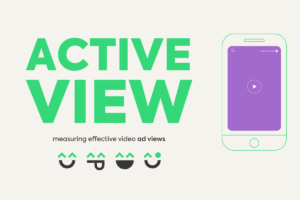LCP optimization for sites with ads is essential to keep users engaged and maximize profitability. Facing the challenge of keeping the site fast while displaying ads, many publishers struggle to find a balance. This guide presents practical solutions, focusing on advanced techniques that promote a superior user experience without compromising the site’s performance.
Index
LCP Challenges in Sites with Ads
Sites that incorporate ads face unique challenges that can impact LCP:
- Ad scripts: Page loading can be obstructed by third-party scripts, causing delays in rendering the main content.
- Size of ads: Large ads, especially videos, tend to prolong loading time.
- Network requests: Ads can generate numerous network requests, overloading bandwidth and extending loading time.
Advanced Strategies for LCP Optimization
Resource Optimization
- Minification and compression: Reducing the size of CSS, JavaScript, and HTML files can be effective.
- Image optimization: Employing optimized image formats and specific techniques helps reduce the size of images without compromising quality.
- Asynchronous loading: Ad scripts should be loaded asynchronously to not interfere with the rendering of the main page.
Page Architecture
- Prioritizing content above the fold: Focusing on the content initially visible, without the need for scrolling, is strategic.
- Lazy loading: Loading elements below the fold only when necessary can be a differentiator.
- Pre-connection: Pre-loading crucial resources, such as ad scripts, can significantly reduce loading time.
Advanced Tools and Techniques
- PageSpeed Insights: This Google tool provides an in-depth analysis of site performance and suggests optimizations.
- Lighthouse: An essential tool for performance audits that identifies opportunities for improving LCP.
- Critical CSS: Injecting critical CSS above the fold speeds up the initial rendering.
Monitoring and Continuous Improvement
The journey to optimize LCP is continuous, encompassing:
- Constant monitoring: Specialized tools are indispensable for tracking LCP and detecting emerging issues.
- A/B testing: Evaluating different optimization techniques helps identify the most effective ones for your site.
Additional Considerations for Publishers
Partnerships with ad suppliers need to ensure the optimization of scripts for LCP. It is advisable to adopt ad formats that load quickly, always prioritizing the user experience.
Grumft: “Stick Top” and “Stick Bottom” Tags
Grumft stands out with its innovative “Stick Top” and “Stick Bottom” tags. These solutions are designed to load extremely quickly, ensuring that there is no negative impact on the optimization of the Largest Contentful Paint (LCP) of the publisher’s site. This advancement represents an important milestone, as it offers publishers the ability to insert high-performance ads without compromising the user experience or page loading speed.
The implementation of these tags is an eloquent example of how technology can be efficiently used to balance monetization and performance optimization. With the “Stick Top” and “Stick Bottom” tags, ads remain discreetly visible at the top or bottom of the screen, capturing the user’s attention without interrupting their navigation. This approach not only improves ad visibility but also respects the natural flow of content consumption by the user, a combination that can significantly increase engagement rates and, consequently, ad revenue.
Conclusion
Improving LCP on sites with ads is a smart investment in the quality of the online service offered. Implementing the advanced techniques described can result in a faster site, a better user experience, and consequently, greater engagement and revenue. This detailed, humanized, and concise approach aims to empower publishers and developers to achieve excellence in web performance, paving the way for success in a competitive digital environment. Above all, count on Grumft to support you on this journey! Contact your account manager today.





